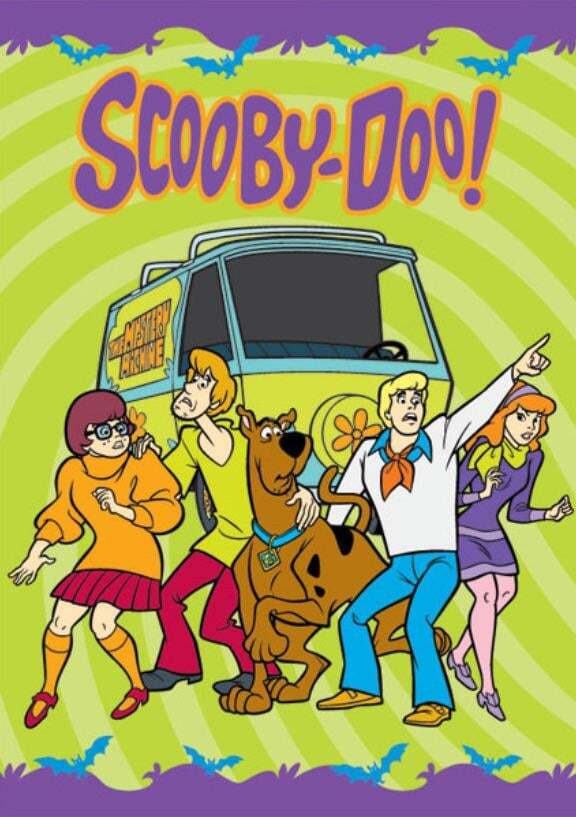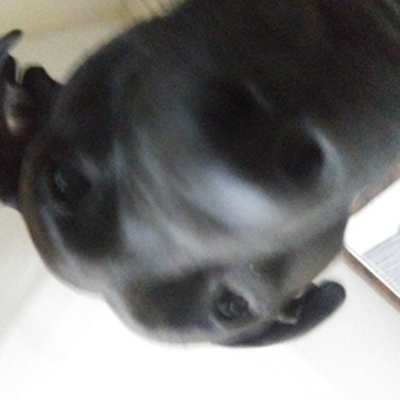
Remember the thrill of hearing "Zoinks!" or "Scooby-Dooby-Doo!" as the gang chased another f...
Related Blogs
Scooby doo where are you?
12 minutes, 7 seconds
-0 Views 0 Comments 0 Likes 0 Reviews

Scooby-Doo: Unmasking the Enduring Mystery and Pop Culture Legacy of Mystery Inc.
Remember the thrill of hearing "Zoinks!" or "Scooby-Dooby-Doo!" as the gang chased another fake ghost? Scooby-Doo has chased spooks and solved riddles for kids of all ages since the late 1960s. You probably grew up watching those Saturday morning cartoons, or maybe your parents did. This dog and his human friends turned simple scares into fun lessons. Mystery Inc., with Fred, Daphne, Velma, Shaggy, and Scooby, stands as a key part of pop culture. This article digs into the show's start, its smart story setup, character bonds, and why it sticks around today. We'll see how Scooby-Doo keeps fans coming back for more mysteries.
The Genesis of Mystery Incorporated: Hanna-Barbera's Groundbreaking Formula
The Original Series and Initial Concept (1969)
Hanna-Barbera launched Scooby-Doo, Where Are You! in 1969 to fill CBS's need for family-friendly fun. The network wanted less scary stuff and more laughs after shows like The Flintstones succeeded. Creators Joe Ruby and Ken Spears dreamed up a team of teen sleuths with a talking dog to mix comedy and light adventure.
The idea came from teen shows of the time, but they added a goofy Great Dane named Scooby-Doo. Voice actors like Don Messick for Scooby and Casey Kasem for Shaggy brought life to the characters right away. Early episodes aired on CBS and hooked viewers with simple plots that kids could follow. This setup made Scooby-Doo a hit from day one. Fans loved the mix of humor and mild chills that felt safe.
The Core Mystery Formula: Setup, Investigation, and Unmasking
Every episode follows a clear path that keeps things exciting yet predictable. It starts in a spooky place like an old mill or haunted house, where the gang hears rumors of a monster. A quick scare sends Shaggy and Scooby running, while the others dig for clues.
They split up—Fred and Daphne check one spot, Velma hunts facts, and the scared pair stumbles into funny trouble. Clues build up until they set a trap, catch the bad guy, and pull off the mask. The villain always says, "And I would've gotten away with it, if it weren't for you meddling kids!" This line became a classic.
The formula builds tension without real fear.
Comedy from Scooby and Shaggy's chases lightens the mood.
The unmasking teaches that logic beats superstition.
This structure acts as a top example of steady story craft for TV shows. It lets young viewers feel smart as they guess along.
Evolution Through Eras: From Scrappy-Doo to Modern Iterations
The franchise grew over years with new twists to match changing tastes. Scrappy-Doo joined in 1979 as Scooby's bold nephew, but fans soon tired of his loud energy. By the 1980s, shows dropped him to focus on the original crew.
A Pup Named Scooby-Doo in 1988 went kid-friendly with softer animation and silly vibes. Later, What's New, Scooby-Doo? from 2002 brought back the classic feel with fresh cases. Recent ones like Scooby-Doo! Mystery Incorporated added deeper backstories and teen drama.
Changes faced pushback, like when tones shifted too far from the fun core. Yet, each era kept the gang's spirit alive. This adaptability helps Scooby-Doo stay fresh for new fans.
Character Dynamics: The Chemistry That Keeps Viewers Hooked
Velma Dinkley: The Brains Behind the Operation
Velma leads with her sharp mind and love for facts. She spots tiny details others miss, like odd footprints or fake fur. Her catchphrase "Jinkies!" pops up when she cracks a clue.
Glasses are her trademark—they slip off in chases, leaving her blind and stumbling for laughs. But Velma shines as the group's rock. In newer shows, she tackles tough puzzles with ease.
Talks about her smarts have grown in real life too. Adaptations highlight her as a role model for clever girls. Fans cheer how she proves brains win over brawn every time.
Shaggy Rogers and Scooby-Doo: The Unstoppable Duo of Comedy and Appetite
Shaggy and Scooby form the heart of the laughs with their wild escapes. Both hate danger but love snacks—Scooby Snacks bribe them into brave acts. Their lingo, like "Like, man!" from Shaggy or "Ruh-roh!" from Scooby, adds charm.
Their hunger often solves the case by accident. They hide in a spot and bump into the villain's gear. This pair shows friendship beats fear when you stick together.
You can see their bond in every chase scene. It's pure fun that pulls you in. No wonder they steal the show.
Fred, Daphne, and the Balance of the Group
Fred plans the traps as the leader, though they flop half the time. His ascot and van-driving skills keep the team moving. He pushes everyone to stay focused amid the chaos.
Daphne started as the one who got caught a lot, earning her "danger-prone" nickname. Over time, she grew tougher—learning self-defense and joining clue hunts more. Now she's a full partner in the action.
Together, they round out the group. Fred's drive, Daphne's grit, and the others' quirks create perfect balance. This mix makes Mystery Inc. work so well.
Cultural Footprint: Scooby-Doo Beyond the Small Screen
Franchise Metrics and Global Reach
Warner Bros. owns the Scooby-Doo rights and has pumped out tons of content. Over 50 years, it includes 15+ TV series, 30 movies, and countless specials. Episodes total more than 1,000 across all formats.
The show airs in over 170 countries, dubbing Scooby's barks worldwide. Merch like toys and clothes sells millions yearly. This reach shows Scooby-Doo's pull across cultures.
Stats prove its staying power—it's one of the longest-running animated brands.
Live-Action Successes and Cinematic Adaptations
The 2002 Scooby-Doo movie brought the gang to life with actors like Freddie Prinze Jr. as Fred. It grossed over $275 million at the box office, mixing CGI for Scooby with real sets. Fans loved seeing the Mystery Machine on screen.
The 2004 sequel, Scooby-Doo 2: Monsters Unleashed, added more stars and hit $111 million. Scooby-Doo and the Monster of Mexico went direct-to-video but still charmed viewers. These films turned cartoon vibes into live thrills.
They faced some criticism for campy tones but won hearts with faithful nods to the original.
Parodies, Cameos, and Crossovers
Scooby-Doo pops up everywhere in pop culture. It parodies itself in shows like The Simpsons, where ghosts turn out fake too. Crossovers team it with WWE stars in wrestling-themed episodes or DC heroes like Batman.
In Supernatural, hunters reference the gang's methods for busting monsters. Even video games feature Scooby solving digital riddles. These nods show how deep its influence runs.
You spot a Scooby reference and smile—it's that common.
The Recurring Theme: Deconstructing the "Monster"
Exposing Mundanity: The Power of Rational Explanations
At its core, Scooby-Doo says most scares have real answers. Ghosts and ghouls always hide greedy people in rubber suits. This twist comforts kids by showing the world makes sense.
Pulling off the mask reveals a neighbor or crook with a simple plan. It teaches to question what seems spooky. No real magic—just human tricks.
This message builds trust in logic from a young age.
Adult Villains and Societal Commentary
Villains often chase cash or revenge with everyday gripes. Real estate sharks want land, so they scare folks away. Jealous types fake beasts to win prizes.
These stories mirror grown-up problems like greed or lies. Kids see adults mess up without getting hurt. It's a light way to spot bad motives.
The gang's wins show teamwork fixes real issues.
The Evolution of the Threats
Early shows stuck to hoaxes every time. Later ones, like 13 Ghosts of Scooby-Doo, tossed in true magic now and then. This shift added edge for older fans.
Most stay grounded, but the change keeps things fresh. It nods to fans who want more than masks. Yet the classic rule holds strong.
Conclusion: Why Mystery Inc. Continues to Solve the Ratings Mystery
The unbreakable ties between Fred, Daphne, Velma, Shaggy, and Scooby keep the charm alive. Their roles mesh like gears in a well-oiled trap.
The straightforward mystery setup delivers joy every episode—predictable but always fun. It hooks you with laughs and smarts.
Scooby-Doo acts as cozy story fuel that links old and new fans. Grab a Scooby Snack and rewatch an episode. You'll see why this gang never fades—what's your favorite mystery?
Photos
-
https://funewgi.com/public/sesblog_album/0f/91/9e7da9e29f1b0e515e4f1334b0625ee9.jpghttps://funewgi.com/public/sesblog_album/13/91/93fce15147834deefbbe0507a9a76372.jpghttps://funewgi.com/public/sesblog_album/17/91/4656e5fef8fd5c6e6d1d61c8001c5b58.jpghttps://funewgi.com/public/sesblog_album/1b/91/00785c6c43279ee07c4f6fd76aa2c676.jpghttps://funewgi.com/public/sesblog_album/0b/91/7b4620c056aac8c62323227d99950396.jpg
Scooby doo where are you? 0 0 0 0 5
5 photos

